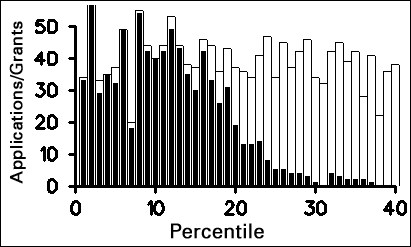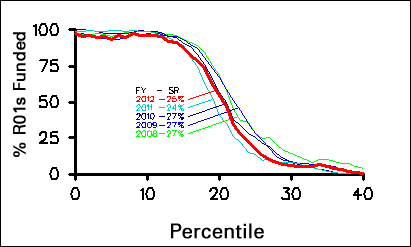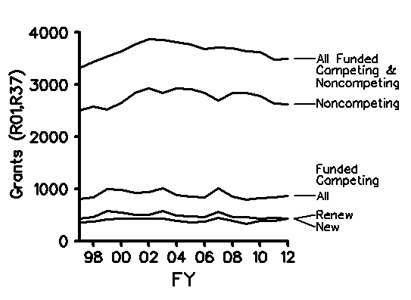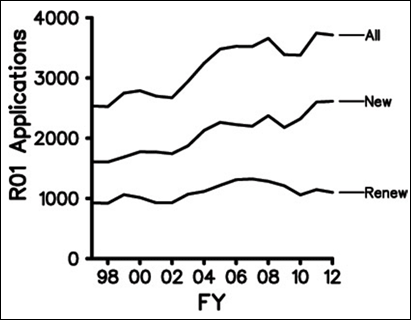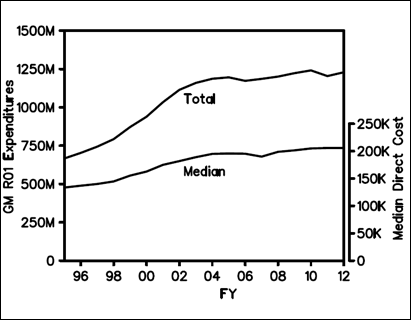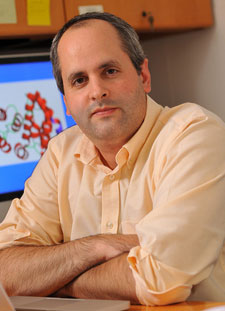Academic Research Enhancement Award (AREA, R15) grants support small-scale research projects in the biomedical and behavioral sciences conducted by faculty and students at educational institutions that have not been major recipients of NIH research grant funds. Recently, a faculty member at an AREA grant-eligible institution wrote to NIGMS Director Jon Lorsch urging the Institute to support more AREA grants, arguing that these grants not only train students but are also cost-effective. This prompted us to take a close look at our portfolio of R15 grants. I’d like to share what we found. Thanks to Tony Moore and Ching-Yi Shieh for providing data in the figures.
NIGMS receives the largest number of R15 applications of any NIH institute. This is not surprising, since faculty and students at eligible institutions typically focus on basic research using model organisms and systems. Table 1 shows that the number of AREA grants awarded by NIGMS in each of the last 10 fiscal years has varied from a high of 63 in Fiscal Year 2007 to a low of 36 in Fiscal Year 2010 and that total funding for these grants has ranged from $8.9 million to $18.4 million. As shown in the first figure, NIGMS funds more R15s than any other institute, in recent years between 21% and 29% of the NIH total.
| Fiscal Year | Number of Applications | Number of Awards | Total Funding ($ in thousands) |
|---|---|---|---|
| 2004 | 128 | 48 | $9,867 |
| 2005 | 142 | 49 | $10,382 |
| 2006 | 171 | 50 | $10,602 |
| 2007 | 200 | 63 | $13,387 |
| 2008 | 167 | 53 | $11,158 |
| 2009 | 172 | 42 | $8,903 |
| 2010 | 199 | 36 | $9,766 |
| 2011 | 313 | 62 | $18,441 |
| 2012 | 306 | 56 | $17,925 |
| 2013 | 304 | 45 | $16,035 |
Table 1. Number of R15 applications received and awarded by NIGMS and the total funding for R15s in Fiscal Years 2004-2013.


 Last July, I announced the creation of a trans-NIH Office of Emergency Care Research (OECR) housed in NIGMS. OECR now has a permanent director: Jeremy Brown, M.D. His NIH appointment will begin in July.
Last July, I announced the creation of a trans-NIH Office of Emergency Care Research (OECR) housed in NIGMS. OECR now has a permanent director: Jeremy Brown, M.D. His NIH appointment will begin in July.